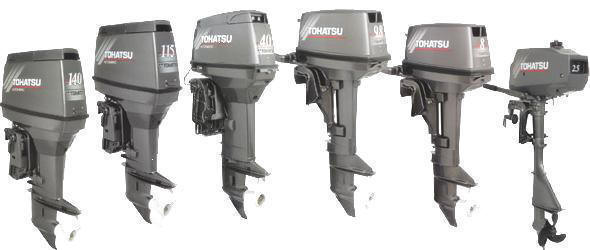Two-Stroke vs. Four-Stroke Outboard Motors

When choosing between a two-stroke or four-stroke outboard motor for your boat, the features of each must be considered. Two-stroke outboard motors are lighter in weight, less expensive, and often faster. They are generally easier to repair and maintain, having a comparatively simple design that has been available for almost 80 years. Two-stroke outboard motors tend to hold their resale value, remaining in high demand in the used market. On the con side, a two-stroke outboard motor produces more pollution, smoke, are non-two cycle oil injection models, have a rougher idle than their four-stroke counterparts, and are sometimes harder to start.
Four-stroke outboard motors are cleaner, quieter, smoother, provide more fuel economy, and are often more reliable. They are preferred by some boaters who run in lakes and rivers because they are generally accepted at any body of water. They do not run on an oil and gas mixture or generate as much pollution. The negatives of four-stroke outboard motors include their high expense for purchase and repair and heavy bulk, which makes it complicated to transport or position in storage without the help of a stand. Because the design for a four-stroke outboard motor is more complicated than its two-stroke counterpart, there are more parts to malfunction. However, outboard motor production will be either four-stroke or very similar. The technology for the four-stroke outboard motor is always improving, and as time goes on, there is a higher percentage of qualified mechanics to perform any necessary repairs. The current used market is very limited for the four-stroke outboard motor, though this is also growing as technology and training improves.
*Note: this comparison does not include direct fuel-injected two-stroke models.


Comments